When I first visited the Temples of Angkor back in 2008 I was totally fixated on Angkor Wat. Little did I know at the time just how impressive the Temples of Angkor are in their entirety. One of the temples that caught my attention immediately was the well-known and richly decorated Prasat Bayon. With its plethora of stone cold smiling faces, this early 13th century looms large at the centre of Buddhist King Jayavarman VII empire – the once former capital of Angkor Thom.
The massive stone faces (equally as impressive both at a distant and from close proximity) dominate the complex. When I first came back in 2008, I was able to explore Bayon without hardly noticing a single other soul along the way. These days, it’s one of the main draws for package tourists and the only way to have it mostly to yourself is to haul yourself out of bed very early in the morning (5 am start is recommended) while most of the tour buses are parked outside Angkor Wat for sunrise.
Visiting Bayon Temple + The Terrace of Elephants

Bayon is also noted for its formidable sets of bas-reliefs carvings which represent a host of different scenes and interpretations ranging from historical to mythological.
My second favorite ruined temple complex in the walled city of Angkor Thom is the imposing Terrace of the Elephants. Once used as the terrace / platform from which to observe king Jayavarman’s triumphant victorious army, the sheer sense of scale of this 350 meter long massive wall is only appreciated by walking along beside it. The wall is richly decorated by elephants that are more distinct to the eye from a distance than they are up close.
Although the days of having Angkor Thom – specifically Bayon and Terrace of the Elephant temples – to yourself is long gone, it’s still one of the most impressive complex areas in all of Angkor and a place I highly recommend taking your time to thoroughly explore. This following is a photo essay and travel video from my time visiting Angkor Thom:
Faces of Bayon: Temples Of Angkor
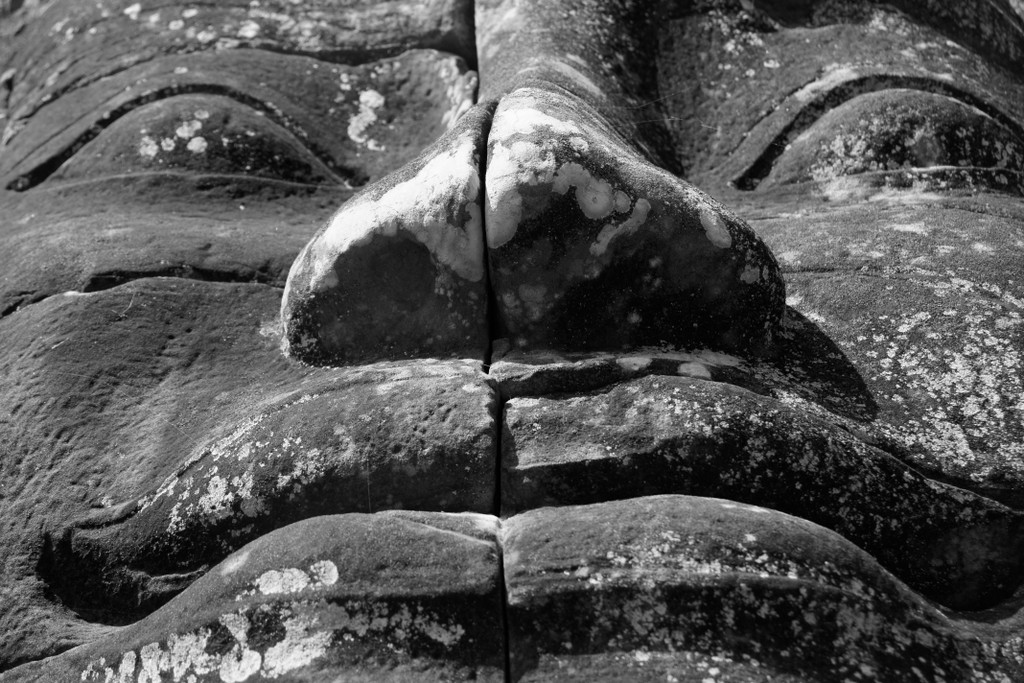
Massive stone face smile up close at Bayon, Angkor Thom.
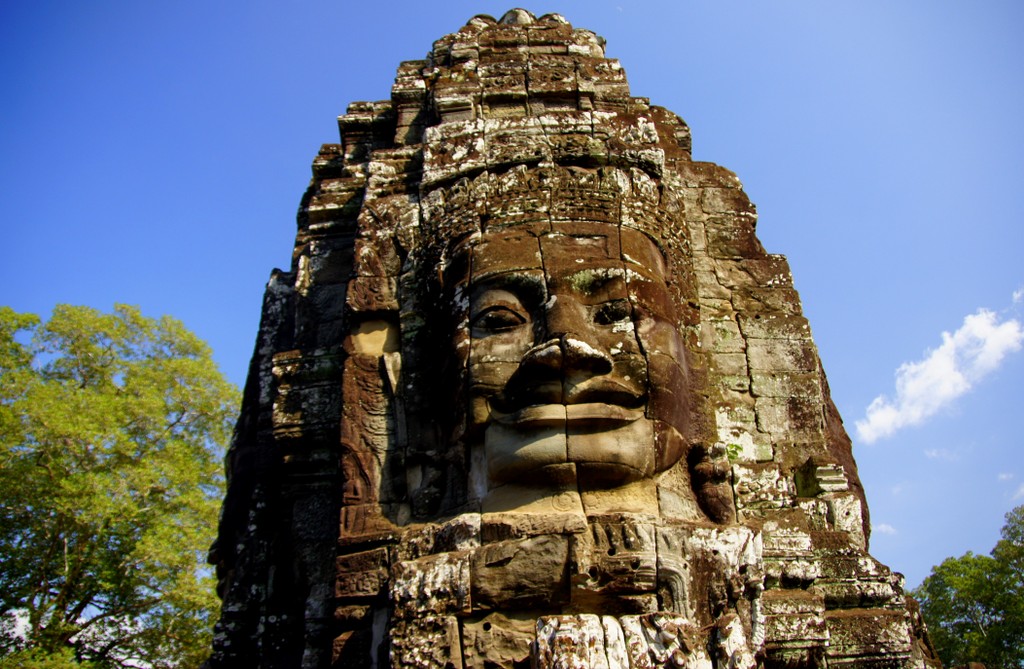
Depending on what time of day and/or the weather conditions really adds a different perspective to the faces.
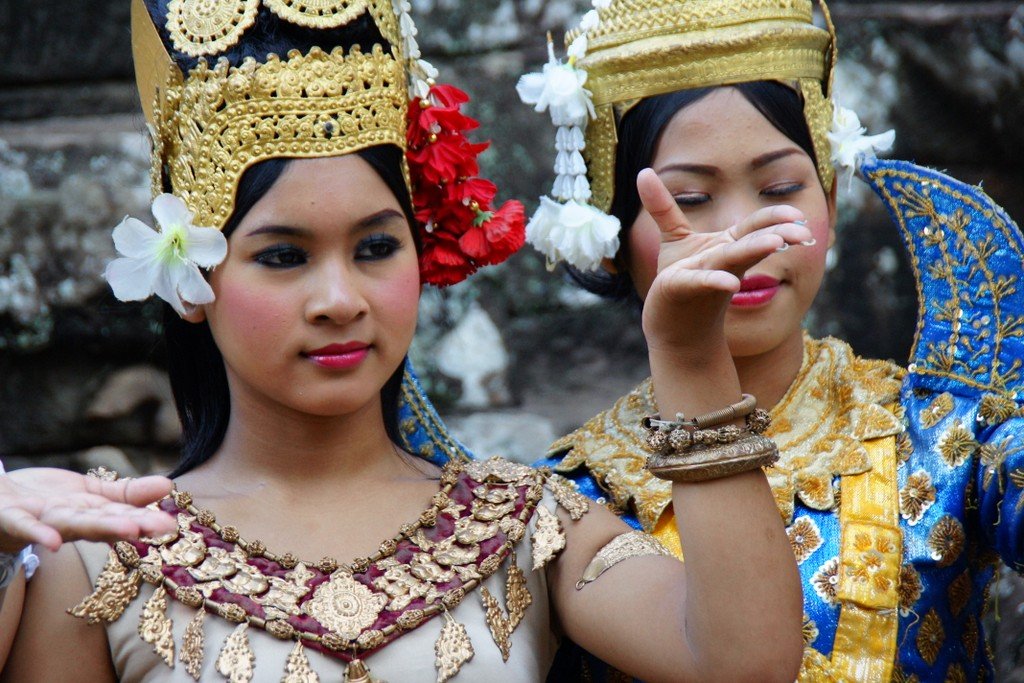
Traditional Khmer dances wearing elaborate costumes greet tourists at Bayon.
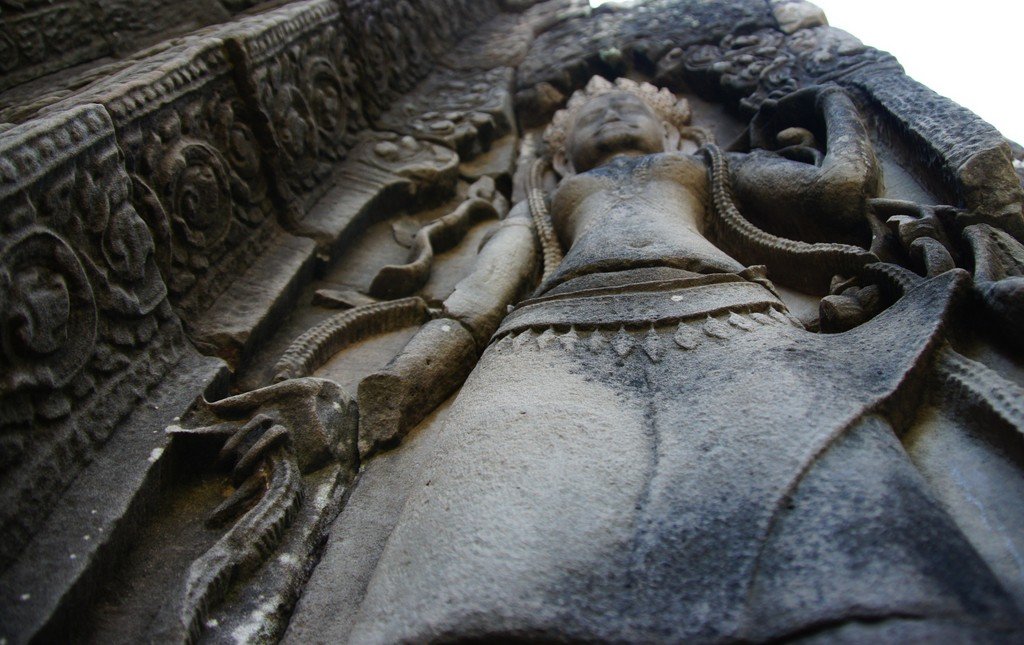
A low angle perspective shot of the bas-relief sculpture at Bayon, Angkor Thom.

A far away vantage point angle of tourists climbing up the many steps to reach the top of Bayon.
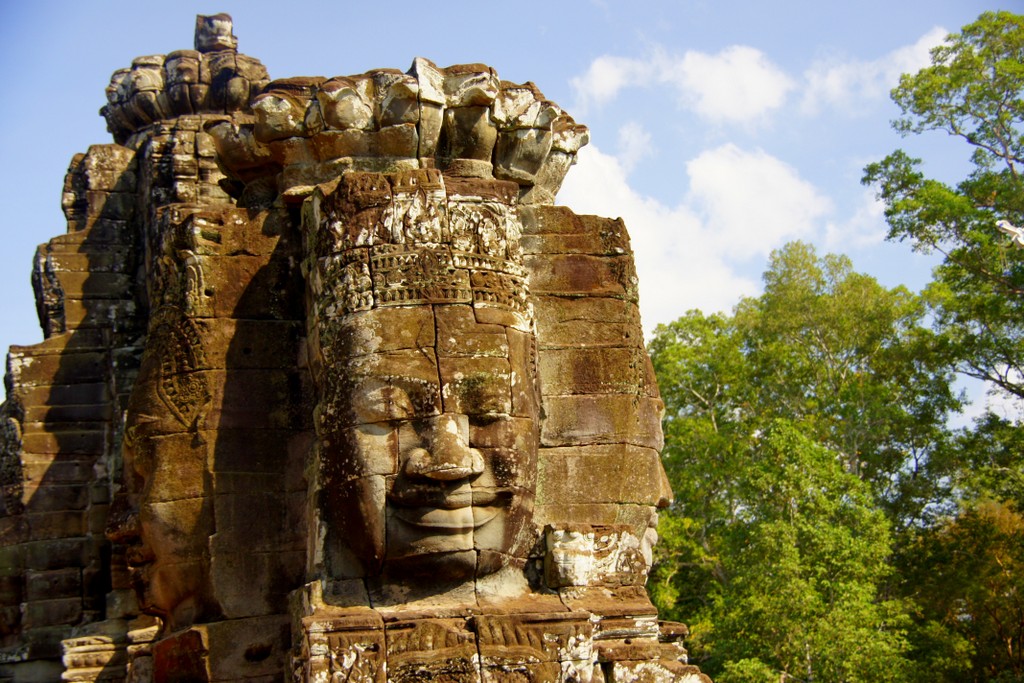
I once read that the faces of Bayon were meant to resemble the King.

The most fascinating aspect of Bayon, in my opinion, were the areas of the temple that you couldn’t climb near the top.

The Terrace of Elephants along Angkor Thom.
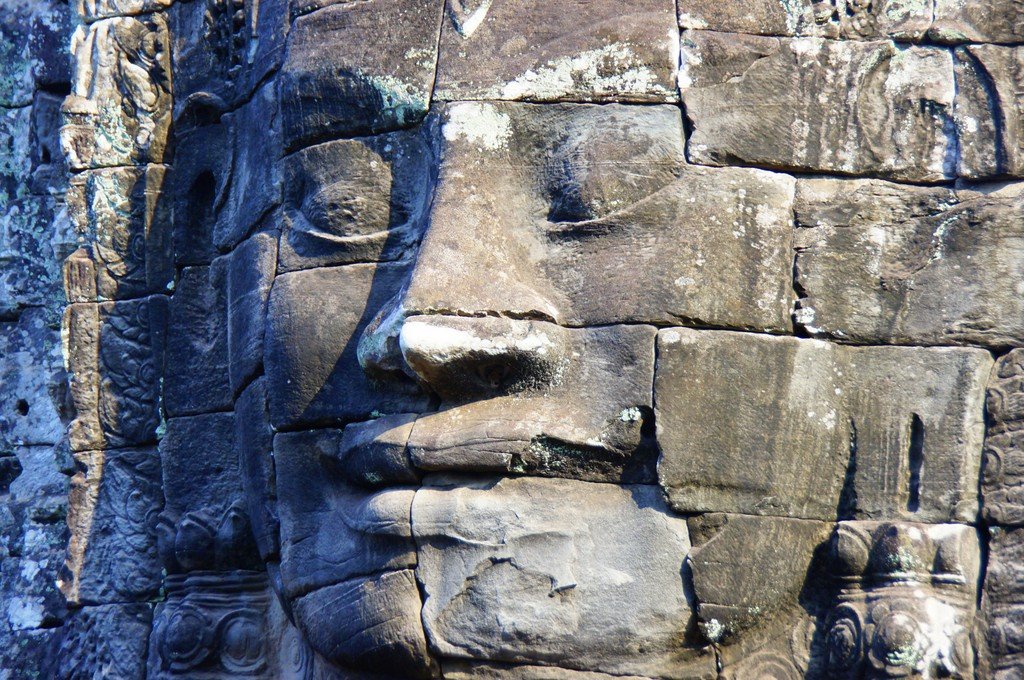
Another shot of the faces of Bayon with shadows and highlights.
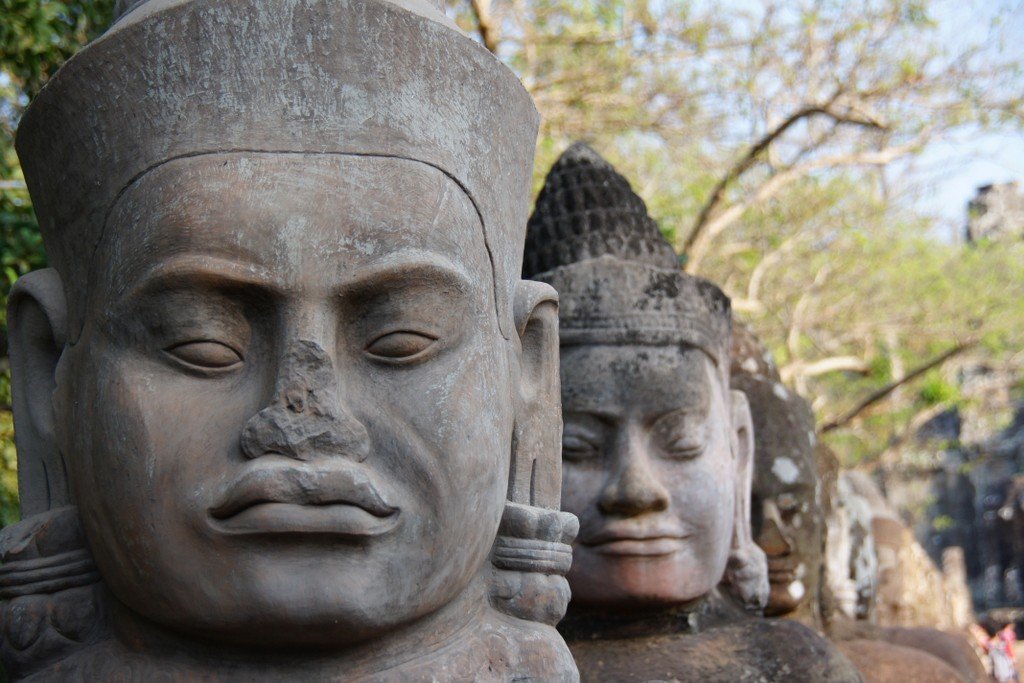
These statues lined the bridge leading up to Angkor Thom.
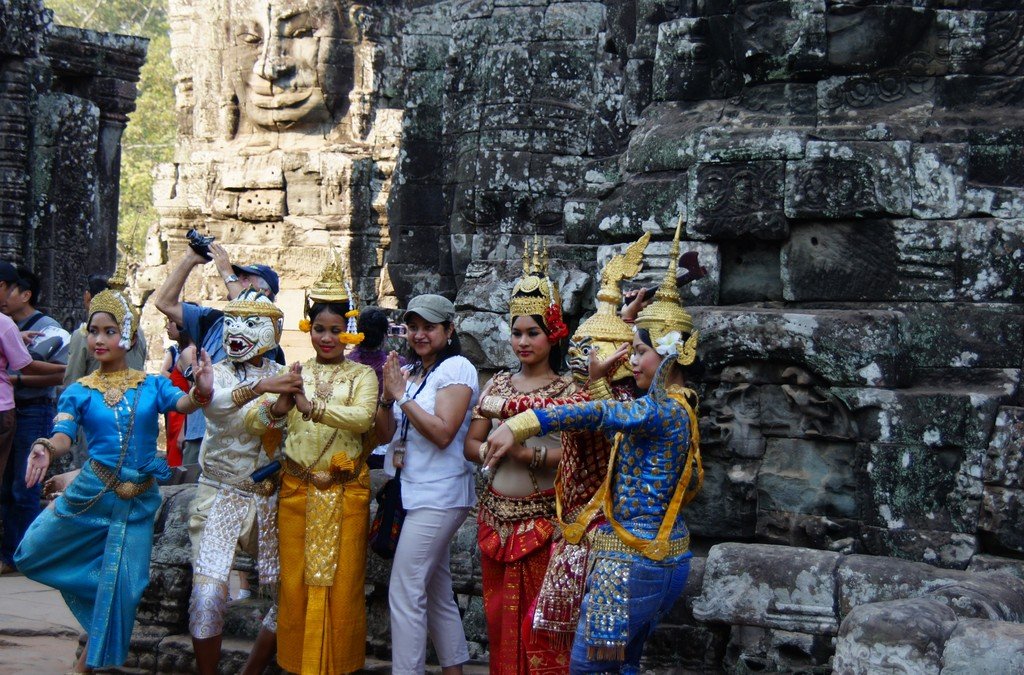
A group photo of the dancers wearing their costumes and posing for the shot.
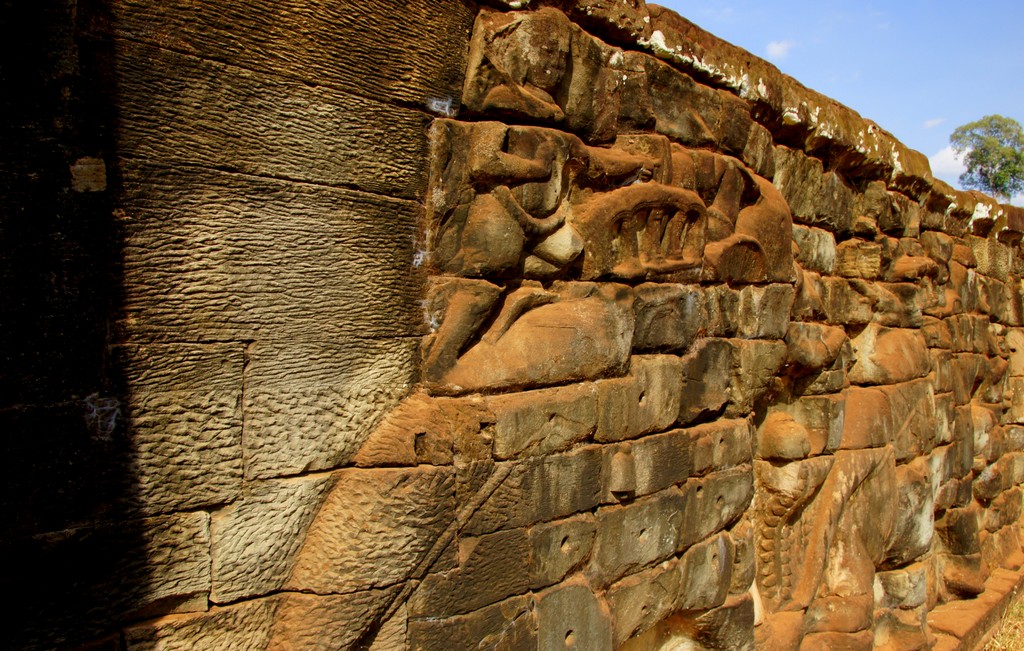
A closer up shot of the Terrace of Elephants.
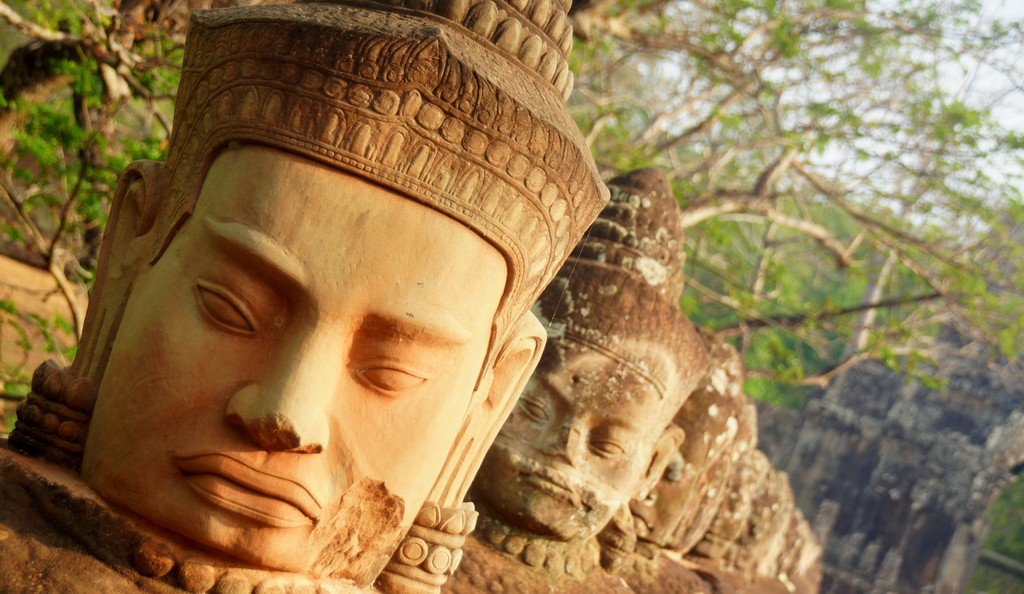
Another shot of the statues at a different time of day.

One more shot of the Terrace of Elephants wall – Angkor Thom, Cambodia.
[vsw id=”jCmfOoBDgVs” source=”youtube” width=”950″ height=”650″ autoplay=”no”]
Our travel video from Bayon, Angkor Thom
Bayon Temple History
Nestled in the heart of Angkor Thom, Bayon Temple is a true architectural marvel of the Khmer Empire, dating back to the late 12th century. Commissioned by King Jayavarman VII, Bayon is not just any temple—it’s the state temple of a once-mighty empire, and its unique features make it stand out among the many wonders of Angkor. What immediately captivates visitors are the 54 towers, each adorned with four massive, serene faces that gaze out in every direction. These faces, believed to be representations of either the bodhisattva Avalokiteshvara or the king himself, seem to watch over the temple grounds with an enigmatic smile, creating an atmosphere of peace and spirituality.
- The Smiling Faces: The iconic smiling faces of Bayon are perhaps its most striking feature. With their serene, almost otherworldly expressions, these faces are thought to symbolize compassion, wisdom, and introspection. As you walk among them, it’s easy to feel a deep connection to the spirituality that permeates the temple.
A Blend of Religions and Cultures
Bayon’s history is as layered as its architecture. Originally constructed as a Buddhist temple, it reflects King Jayavarman VII’s devotion to Mahayana Buddhism. However, as the empire transitioned back to Hinduism under later rulers, Hindu elements were incorporated into the temple’s design. This blending of religious influences makes Bayon a fascinating study in cultural and religious syncretism.
- Buddhist Foundations: The temple’s initial design was deeply influenced by Mahayana Buddhism, as seen in the serene expressions of the faces and the numerous Buddha images throughout the temple. These elements highlight the king’s desire to present himself as a compassionate and wise ruler.
- Hindu Revisions: After the death of Jayavarman VII, subsequent rulers added Hindu elements to Bayon, including depictions of Hindu deities and mythological scenes. This layered religious symbolism adds to the temple’s complexity and historical significance.
The Bas-Reliefs: Stories Carved in Stone
One of Bayon’s most remarkable features is its extensive bas-reliefs, which cover the temple’s outer galleries. These carvings provide a vivid, detailed narrative of the Khmer Empire’s life and times, from epic battles to everyday scenes of market life, fishing, and festivities. The craftsmanship is astonishing, with each panel offering a glimpse into the empire’s culture, beliefs, and history.
- Scenes of Daily Life: The bas-reliefs are not just about grand events; they also depict the ordinary lives of the Khmer people. You’ll see scenes of markets bustling with activity, people enjoying music and dance, and fishermen at work—each panel a snapshot of a moment in time.
- Mythology and Warfare: Interwoven with these everyday scenes are depictions of epic battles and mythological tales. These carvings not only illustrate the military might of the Khmer Empire but also its rich tapestry of legends and religious beliefs.
Why Bayon Temple is an Unmissable Experience
Visiting Bayon is not just about seeing an ancient temple—it’s about stepping into the heart of Khmer civilization. The temple’s unique blend of spiritual, cultural, and historical elements offers a deeply immersive experience. The faces of Bayon seem to transcend time, inviting visitors to reflect on the spiritual and cultural heritage of Cambodia.
- A Spiritual Journey: As you explore Bayon, you’re not just visiting a historical site; you’re embarking on a spiritual journey. The faces that watch over you, the stories carved into the stone, and the temple’s serene atmosphere all combine to create a space that invites contemplation and introspection.
- A Window into the Past: Bayon is a living museum of Khmer history, where every stone has a story to tell. Whether it’s the shift from Buddhism to Hinduism or the everyday lives of the people, Bayon offers an unparalleled glimpse into the life of an ancient civilization.

Terrace Of Elephants Wall History
The Terrace of the Elephants, located within the ancient city of Angkor Thom, was constructed in the late 12th century under the reign of King Jayavarman VII. This impressive 350-meter-long platform served as a grand viewing stand for the king and his court to watch military processions, games, and public ceremonies. The terrace’s name comes from the intricate carvings of elephants that adorn its walls, showcasing the significance of these majestic creatures in Khmer culture.
- The Elephant Carvings: The terrace is renowned for its detailed bas-reliefs depicting elephants in various scenes, including hunting and ceremonial processions. These carvings are not only artistic marvels but also provide insight into the importance of elephants in royal symbolism and the daily life of the Khmer Empire.
Historical Significance
The Terrace of the Elephants is a key piece of Angkor’s architectural and cultural history. It was part of a larger complex that included the royal palace and other important structures. The terrace itself was used as a platform for the king to observe his troops and for public gatherings, making it a central hub of activity in the royal city.
- Royal Pageantry: The terrace was the stage for royal pageantry, where the power and glory of the Khmer Empire were displayed. Imagine the king, his court, and foreign dignitaries all gathered here, with the grand spectacles of military might and cultural performances unfolding before them.
Why the Terrace of the Elephants is a Must-Visit
What makes the Terrace of the Elephants a unique experience for visitors is the sense of history that permeates the site. As you walk along the terrace you can almost hear the echoes of ancient ceremonies.
- Architectural Grandeur: The terrace is a testament to the architectural prowess of the Khmer Empire. The scale of the structure and the intricacy of the carvings highlight the empire’s ability to combine functionality with artistic beauty.
- A Step Back in Time: Visiting the Terrace of the Elephants offers a tangible connection to the past. It’s a place where you can imagine the grandeur of Angkor Thom in its prime, filled with the sights and sounds of royal ceremonies.

Angkor Thom History
Angkor Thom, meaning “Great City,” was the last capital of the Khmer Empire. Founded in the late 12th century by King Jayavarman VII, it was designed as a fortress, symbolizing the empire’s strength. The city is enclosed by an imposing wall and a wide moat, which adds to its grandeur. It’s a place where you can feel the echoes of history.
- Five Grand Gates: The city’s five gates, each adorned with serene faces, are both awe-inspiring and symbolic. They represent protection and divine guardianship, welcoming you into the ancient world of the Khmer.
A City of Temples and Art
Angkor Thom is home to some of the most significant temples and monuments in Cambodia. At its center lies the Bayon Temple, famous for its towering stone faces that exude a quiet serenity. The city also boasts the Terrace of the Elephants and the Terrace of the Leper King, both of which are intricately carved with scenes of mythological and royal significance.
- Bayon Temple: This is the heart of Angkor Thom. With its 216 giant stone faces, Bayon is both mysterious and mesmerizing. The temple’s design reflects the artistic heights of the Khmer Empire.
- Terraces of Power: The terraces were used for royal ceremonies and public audiences. Walking along these terraces, you can imagine the grandeur of the Khmer court, with its processions and rituals.
Why Angkor Thom Stands Out
Visiting Angkor Thom is like stepping into a different era. It’s a journey through the height of the Khmer Empire. The city’s massive scale and the artistry of its temples offer a unique experience. Every corner of Angkor Thom tells a story, from the monumental gates to the intricate carvings on the temple walls.
- A Living History: Angkor Thom is not just ruins; it’s a city that still breathes with the life of its past. The mix of Hindu and Buddhist influences, combined with the grand scale of the architecture, makes it an unforgettable destination.
- Architectural Mastery: The combination of religious symbolism and architectural grandeur is what makes Angkor Thom truly unique. It’s a place where you can witness the pinnacle of Khmer art and engineering.

Designing Your Perfect Bayon + Angkor Thom Day
If Bayon and the Terrace of the Elephants are the temples that really grab your imagination, it makes sense to build an Angkor day where they’re the stars of the show instead of a quick stop on a bus loop.
Think of Angkor Thom as its own compact city of ruins. If you move slowly, pay attention to details, and give yourself room for breaks, it becomes a lot more memorable than just a box-ticking exercise.
Small Circuit, Grand Circuit… or Bayon-Focused Loop?
Most travelers end up on either the “Small Circuit” or the “Grand Circuit” without really understanding what that means. Here’s a simple way to think about it when Bayon is your priority:
| Option | Main Focus | Pros | Cons | Best For |
|---|---|---|---|---|
| Classic Small Circuit | Angkor Wat + Bayon + Ta Prohm | Hits the icons in one day | Bayon can feel rushed and crowded | First-timers with limited time |
| Grand Circuit | Wider ring of temples | Adds quieter, less-visited temples | Bayon becomes “just one more stop” | Temple fans with decent stamina |
| Bayon + Angkor Thom Day | Angkor Thom area almost all day | Deep dive into faces, terraces, hidden corners | Skips some big names if you only have 1 day | Slow travelers and photography lovers |
If you’ve got at least two days for Angkor, dedicating one almost entirely to Bayon and Angkor Thom is a game-changer. You stop temple-hopping and start temple-living.
Sample Bayon & Angkor Thom Day (Slow, But So Worth It)
Use this as a loose framework and tweak based on your energy levels and whether you like early mornings.
05:00–07:00 – Sunrise and Quick Angkor Wat Hit
- Head into the park early and join the sunrise crowd at Angkor Wat once.
- After sunrise, walk quickly through a section of Angkor Wat (you’ll likely come back another day if you have a multi-day pass).
- The real goal is to get to Bayon before the worst of the late-morning tour groups.
07:30–10:00 – Bayon in Soft Morning Light
- Head straight to Bayon while the air is still relatively cool.
- Start on the upper terraces with the iconic smiling faces.
- Circle slowly, stop often, and give yourself time to notice how the faces change with light and shadow.
- Drop down to the bas-relief galleries once the sun is a bit higher; this is where you’ll see daily life scenes carved in stone.
10:00–12:00 – Angkor Thom Side Temples
Staying inside the walls of Angkor Thom avoids that mid-morning “fried by the sun and tuk-tuk fumes” feeling.
Good options inside the complex:
- Baphuon (towering pyramid-style temple with great views over the forest)
- Phimeanakas (smaller but atmospheric)
- Royal Palace area remains
- Shade breaks under the big trees along the ancient causeways
Take it slow, drink water constantly, and don’t be afraid to sit and people-watch.
12:00–15:00 – Long Break + Terrace of the Elephants
- Midday is when the heat hits like a wall. This is the time for food, coconut water, and shade.
- There are simple food stalls and drink stands not far from the Terrace of the Elephants; standards are basic but fine for a quick lunch.
- After eating, stroll the length of the Terrace of the Elephants in the early afternoon when crowds thin a bit.
- Walk both along the top and beside the base so you can appreciate the full scale and the carved elephants up close.
15:00–17:30 – Second Bayon Session + Gate Time
- Loop back to Bayon in late afternoon when the light goes golden and the day-trippers are starting to fade.
- This second visit feels completely different: fewer crowds, softer shadows, cooler temperatures.
- If you still have energy, finish your day at one of the Angkor Thom gates (often the North or South Gate) where the causeways lined with guardian figures glow beautifully near sunset.
By the end of a day like this, you won’t feel like you “saw Bayon.” You’ll feel like you lived there for a little while.
Getting Around: How to Move Between Siem Reap, Bayon, and Angkor Thom
You’ll be based in Siem Reap, commuting into the park each day. The distance isn’t huge, but the heat and sun make your transport choice more important than it looks on a map.
Tuk-Tuk vs. Bicycle vs. Driver
Here’s a quick breakdown of the main ways travelers get to and around Angkor:
| Mode | Vibe | Pros | Cons | Good For |
|---|---|---|---|---|
| Tuk-tuk | Classic Angkor experience | Breezy, affordable, flexible, local drivers | Dusty, exposed to heat, slow on long stretches | Most travelers |
| E-bike | Independent and fun | Freedom to stop anywhere, quiet, eco-friendly | Sun exposure, battery anxiety, navigation | Confident, heat-tolerant riders |
| Bicycle | Old-school backpacker | Very cheap, great exercise | Brutal in the heat, slow between far temples | Hardcore budget/fitness types |
| Car/van | Air-con comfort | Cool, fast, comfortable | Less “romantic,” pricier | Families, older travelers |
For a Bayon-heavy day, a tuk-tuk hits the sweet spot: you can negotiate an Angkor Thom–focused circuit, leave your water/gear in the tuk-tuk, and always know there’s shade waiting.
How Long to Budget at Each Spot
For a relaxed, photography-friendly day around Angkor Thom:
- Bayon: 2–3 hours total (split into two visits, morning + afternoon, if you can)
- Terrace of the Elephants + nearby terraces: 1–1.5 hours
- Other Angkor Thom temples (Baphuon, Royal Palace area, small sanctuaries): 2–3 hours scattered through the day
- Gates and causeways: 45–60 minutes
You’ll easily fill a full day without ever feeling rushed.
When to Go: Seasons, Crowds, and Light
Cambodia’s climate shapes your experience more than any guidebook ever will.
Cool/Dry vs. Hot/Dry vs. Wet Season
You’ll hear people talk about “high season” and “low season,” but for Angkor Thom it’s more useful to think in terms of comfort and photography.
Cool & Dry (roughly Nov–Feb)
- Mornings feel crisp, evenings are pleasant.
- Crowds are thicker, especially around holidays.
- Perfect for long Bayon sessions and terrace walks without melting.
Hot & Dry (roughly Mar–May)
- Brutal midday heat. Bayon’s stone radiates warmth like a furnace.
- Sunrise and late afternoon become non-negotiable; midday is siesta time.
- Skies can be hazy but you still get nice golden light.
Wet Season (roughly Jun–Oct)
- Greenest, most atmospheric version of Angkor Thom.
- Rain showers often roll in during the afternoon, cooling things down.
- Fewer crowds, more brooding skies, dramatic clouds behind the Bayon faces.
If you’re flexible, the shoulder months on either side of peak season (say late November or February) often deliver a nice mix of tolerable heat and manageable crowds.
What to Wear and Bring for a Bayon-Focused Day
Bayon and the Terrace of the Elephants look serene and cool in photos, but on the ground it’s sweat, stone, and sun.
Clothing for Temples and Tropical Heat
You need to hit two goals at once: respect the dress code and survive the sun.
- Light, breathable fabrics (linen, cotton, moisture-wicking synthetics).
- Tops that cover shoulders.
- Shorts or skirts that cover knees, or light travel trousers.
- Comfortable walking shoes or sturdy sandals with a good grip for worn, uneven stones.
- A wide-brim hat or cap to keep the sun off your face when you’re up on the exposed towers.
Daypack Essentials
Think “small but mighty.” A simple, light daypack is enough:
- Refillable water bottle (top up whenever you pass vendors).
- Electrolyte tablets or powder if you’re prone to headaches in the heat.
- Compact rain jacket or poncho in wet season.
- Small microfiber towel to mop sweat or wipe your face.
- Sunscreen and lip balm with SPF.
- Camera + spare battery + extra memory card.
- Phone with offline map of the Angkor area, just in case.
- A scarf or light shawl (doubles as sun protection, modesty cover, or dust blocker).
Leave passports, big amounts of cash, and anything fragile back in your hotel safe. Out at Bayon, you want to be able to move freely without fussing over gear.
Photography Tips for Bayon, Terrace of the Elephants, and Angkor Thom
Bayon is one of those places where it’s very easy to take a lot of photos and still feel like you missed the magic. A few small tweaks help you come home with images that match how the place felt.
Best Times of Day for Bayon
- Early morning (after sunrise, before 9:00): softer side light on the faces, cooler air, fewer groups.
- Late afternoon: rich contrast, long shadows, moody faces with the sky starting to soften.
- Midday: harsh and unforgiving, but good for high-contrast black-and-white shots of details and bas-reliefs.
You don’t need fancy gear. A mid-range zoom lens (something that lets you go wide and zoom in a little) is ideal:
- Wide for capturing the towers and faces in context.
- Slight telephoto for isolating a single enigmatic smile.
Composing Bayon’s Faces
Instead of firing off the same “face in the middle” shot again and again, try:
- Profiles against the sky.
- Faces peeking between pillars or doorways.
- Reflections in puddles after rain.
- People interacting with the architecture (someone looking up, a monk walking through a corridor).
Give yourself permission to put the camera down as well. Some of Bayon’s best moments are just standing quietly while the stone towers loom overhead.
Terrace of the Elephants and Angkor Thom Gates
- At the Terrace of the Elephants, walk the full length, then turn around and walk it again from the opposite angle. Different carvings reveal themselves depending on the light.
- At the gates, wait for moments when a tuk-tuk, bicycle, or monk passes through – that tiny splash of color makes the stone feel alive.
Where to Stay in Siem Reap for Angkor-Focused Days
Siem Reap is compact, but different neighbourhoods give you slightly different experiences. If Bayon and Angkor Thom are your priority, where you stay can make your mornings smoother (or more chaotic).
Quick Neighbourhood Comparison
| Area | Vibe | Pros | Cons | Best For |
|---|---|---|---|---|
| Pub Street / Old Market | Lively, social, noisy | Tons of food, bars, easy to get tuk-tuks | Night noise, tourist prices | Night owls, solo travelers |
| Wat Bo / Riverside | Quieter, local–expat mix | Cafés, boutique stays, walkable to center | Slightly longer tuk-tuk ride to Angkor | Couples, digital nomads |
| Sok San side streets | Budget and mid-range guesthouses | Cheap eats, laid-back, traveler crowd | Less polished, a bit scruffy in spots | Backpackers, long-stay visitors |
| Road to Angkor area | Resort strip | Pools, gardens, easy morning escape to park | Less “local” feeling, need tuk-tuk at night | Families, heat-sensitive visitors |
If you know you’ll be setting alarms for 4:30–5:00 a.m., staying slightly closer to the road leading to Angkor can shave a few precious minutes off your sleepy commute. If evenings and restaurant options matter more, being near the Old Market or Wat Bo is a nice balance.
Budgeting a Bayon + Angkor Thom Day
Costs are always shifting, but you can think in terms of daily style more than exact numbers. Your biggest anchors are:
- Park pass for Angkor (single- or multi-day option).
- Transport (tuk-tuk, e-bike, car).
- Food, water, and a couple of well-earned cold drinks.
- Optional guide.
Here’s a rough way to conceptualize a single full Angkor day that includes Bayon and Angkor Thom:
| Style | Transport | Food & Drinks | Extras | Overall Feel |
|---|---|---|---|---|
| Shoestring | Shared tuk-tuk or bicycle | Simple local meals, lots of water | No guide, minimal souvenirs | Hot, intense, but affordable |
| Mid-range | Private tuk-tuk | Mix of local and café meals | Half-day guide, a few souvenirs | Comfortable, flexible, good balance |
| Comfort | AC car/van | Restaurant meals, coffee stops | Full-day guide, massage after | Easy, less fatigue, more depth per site |
If you’re only splurging once, hiring a knowledgeable Angkor guide for your Bayon day is where it pays off. Those bas-reliefs and smiling faces carry so many stories that just aren’t obvious without context.
Common Mistakes at Bayon, Terrace of the Elephants, and Angkor Thom
A few small missteps can make the day feel overwhelming instead of awe-inspiring. These are easy to avoid once you know they’re coming.
Starting Too Late
Arriving at Bayon at 10:30 or 11:00 a.m. means:
- Harsher light, hotter stone.
- Tour groups in full swing.
- Less patience to appreciate the details.
Even if you’re not a sunrise person, aiming to be at Bayon by 8:00 a.m. changes everything.
Trying to Do “All of Angkor” in One Day
It’s tempting to cram Angkor Wat, Bayon, Ta Prohm, a few fringe temples, and a sunset into a single visit. On paper it looks doable; in practice it feels like a marathon in a sauna.
Letting Angkor Thom be a full day gives you time to:
- Read the bas-reliefs.
- Watch light change on the faces.
- Wander the terraces without clock-watching.
Ignoring the Bas-Reliefs
At Bayon, a lot of travelers go straight for the big faces and barely glance at the outer galleries. It’s like reading only the headlines of an incredible book.
Make a point of slowly circling at least one entire side of the bas-reliefs. Look for:
- Daily market scenes.
- Naval battles.
- Games, musicians, dancers.
- Animals tucked into corners.
Suddenly the temple feels less abstract and more human.
Not Drinking Enough Water
You don’t really notice how much the heat is draining you until you stop concentrating. Headaches, irritability, a sense of “I’m done with temples” – often it’s just simple dehydration.
Sip constantly. Don’t wait until you’re thirsty.
Forgetting to Just Stand Still
It’s easy to power-walk from tower to tower chasing “the best view.” Some of the most powerful Bayon moments, though, happen when you just find a quiet corner, lean against warm stone, and listen to the wind and distant echoes of guides speaking softly.
Give yourself at least one moment like that. Let the “Great City” breathe a bit around you.

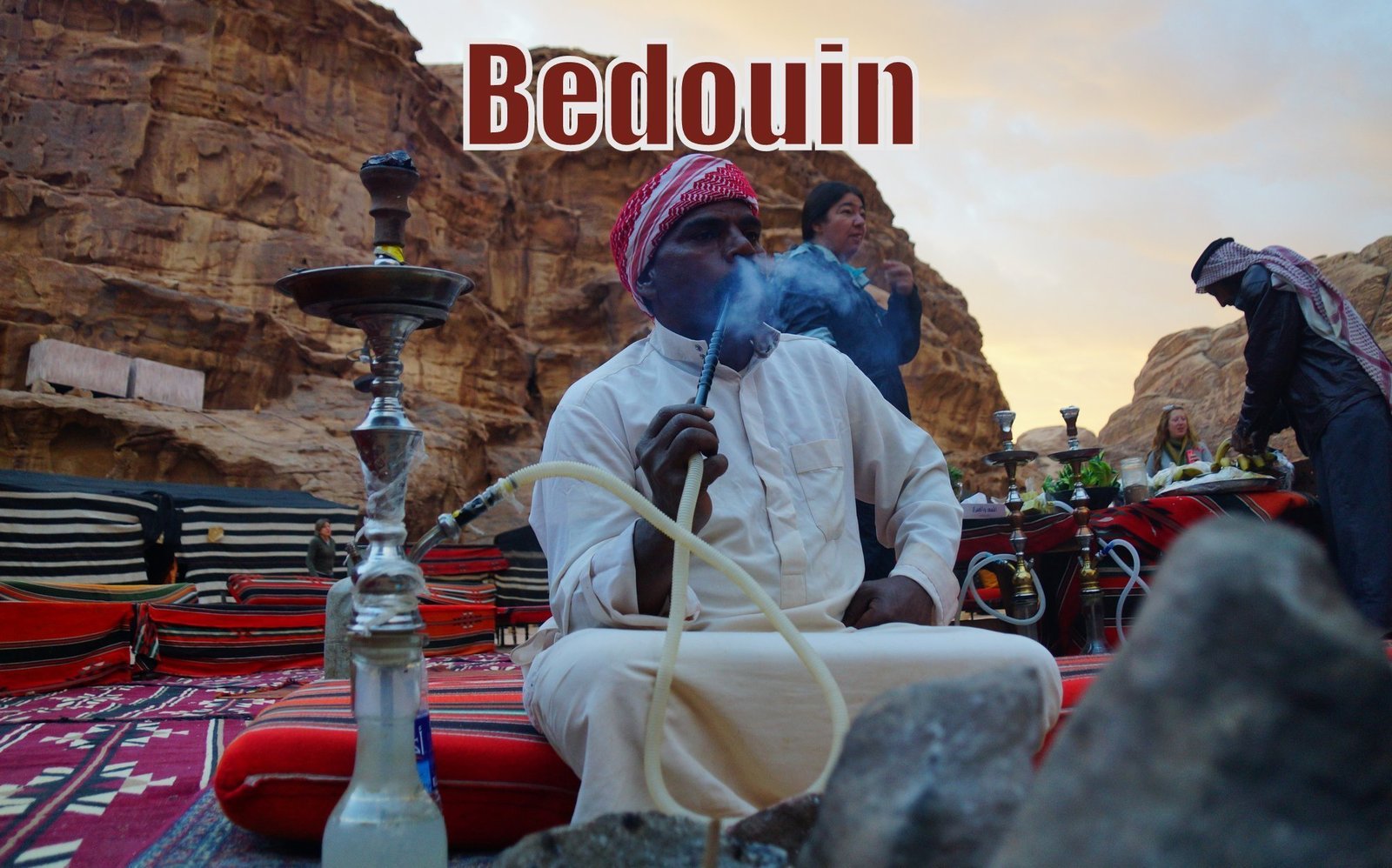
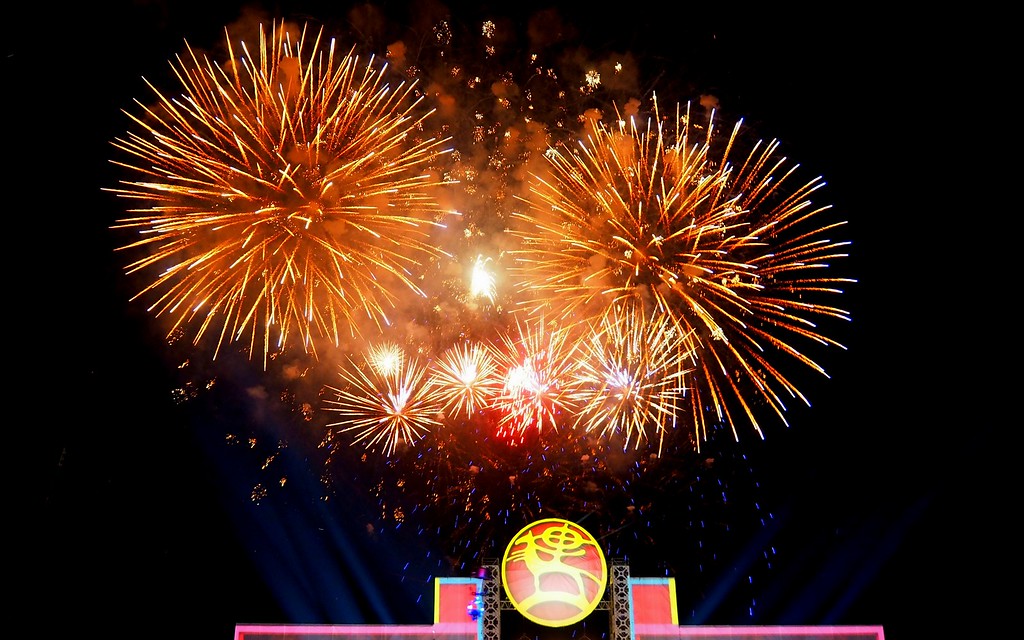

Great photos, you really captured the faces. We spent a week in Siem Reap and 3 full days exploring all the temples. Bayon was for us the most impressive and I think most people going there are surprised at that because they automatically think Angkor Wat is going to be the highlight. You’ve done a good job describing some of the other temples like Ta Prohm and Banteay Srei which are also great in different ways. Its amazing the variety and differences in the temples.
We did a giant post breaking down all the temples and which have to seen: http://bbqboy.net/ancient-angkor-and-the-top-10-temples-of-angkor-wat-archaeological-park/. I think we are also going to end up going back – there is so much to see and the first time is more of a getting acquainted thing. Next time we’ll know which temples we want to see again and will make sure to see them in the right time of day. That’s also important at Angkor.
Great post!
Frank (bbqboy)
The photos here seem to invite me to visit the country in the near future. 🙂
Just incredible photography! We plan on visiting Asia next year and this place is now on the list (the list is getting pretty long).
Thanks Nicole, definitely it would be worth while visiting the Temples of Angkor in Siem Reap if at all possible 🙂
Sigh, looking at those pictures makes me sad because I was supposed to visit Cambodia last year with a co-worker who’s from there, but she never updated me on the trip. Your pictures make up for it though 🙂
Beautiful photography! Really inspiring, makes we want to pack my bags and my camera right now! Thanks for putting another place on my to do list 🙂
Incredible photos! Really reminds me of our trip to Ayutthaya just outside Bangkok last year. Beautiful and amazing architecture!
Curious, did you like Bayon more than Angkor Wat?
This was the last temple we visited last week and this was my favorite!
Stayed here to finish off the temple visits, and this was the only temple that left me longing to stay longer.
Lots of corners where one can take a rest too.
They are each different in their own way, but I really liked the faces of Bayon. 🙂
I’ve been to Angkor three times, in 2001, 2005, and 2010. It definitely gets more and more crowded every year, but I agree that the Bayon still has it’s appeal. It’s one of my favorites. In fact, if I go back to Angkor for a 4th time, I’ll definitely be stopping at the Bayon for some photos (and doing my best to pick a time of day with minimal crowds…. I think noon or 1pm when it’s hot and most people are eating lunch is also a pretty good time to be there).
I have to agree, I’ve noticed more and more crowds as the years have gone by. More people are discovering this not so hidden gem. 🙂
What a beautiful place. I have heard of it so much. Hope I visit it someday in the future. Thanks for sharing the pictures 🙂
Thanks Arti! It’s definitely a must see temple when visiting Angkor 🙂
So many wonderful photos.
You really make me want to go there!
Thank you very much! I sure hope you can go there soon 🙂
This is crazy! Do they still crush the statues? Talking about the new heads on the sides of the bridge…
Wow! I have no idea if they still do that.
It seems like they do. The front heads on the bridge are newly produced, and they have been damaged… I guess by some local vandals
Great photos! We visited in February and loved exploring the temples. (There are photos on our travel blog too.)
Thanks Lori! I think you likely experienced much nicer weather than we just did 😉
Beautiful images that encourage me to visit x
Thank you Anisha! That’s the nicest compliment anyone could say to me 🙂
BEAUTIFUL photographs! Stop me in my tracks awesome, well done. I’ve been, I’m going again soon, I’ll really work on my photography this time!
Thanks Alyson, looking forward to seeing how you capture the beauty of this wonderful temple 🙂